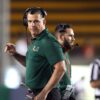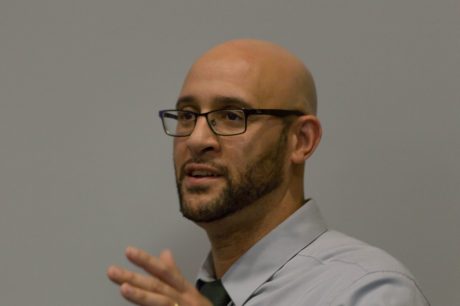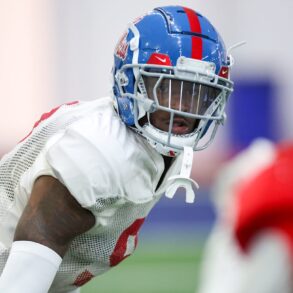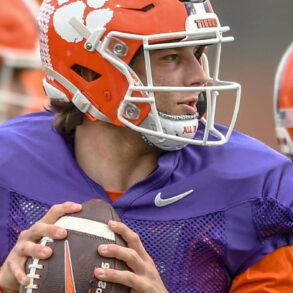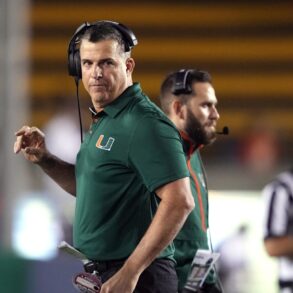“I was very much harassed and coerced by [Coach] and the staff for the better part of my time [in the program]. [Coach] would spread rumors to other members of the staff and players about me in an effort to get me freezed out.”
This is what a recent former Power Four college football player—who wishes to remain anonymous due to fear of reprisal—told us during an interview. He went on to add: “There was a point where he had so many of my teammates against me and constantly harassing me that I had to keep a knife in my locker because I was scared for my life. There was a point where everyone involved with the team just stopped treating me normally and began to tell me and imply that I should just quit the team or transfer.”
These experiences echo interviews we conducted with 25 former college football players for our book, The End of College Football: On the Human Cost of an All-American Game. They reflect a pattern of institutional gaslighting by coaches that is all too common in the world of big-time college football. They also raise serious questions about the place of this sport in institutions ostensibly dedicated to pedagogy and development. While most people assume that college football players have strong scholarship protections that afford them some measure of job security—and indeed, the NCAA has just published “core guarantees” that ostensibly protect scholarships from being canceled or failed to be renewed due to “injury,” “physical or mental illness,” “athletic ability or performance,” “contribution to team success,” or “roster management decisions”—the truth is that in practice coaches wield absolute authority over who is allowed to remain on their rosters. This means that even if a coach is technically unable to fire (cut) a player, they have wide latitude to make their life miserable should they not meet the coach’s standards—leading to rampant coercion and abuse.
Most discussions of inequality in college football and college sports more generally overlook the dynamics of intimidation, bullying, and control at the heart of the college athletics, focusing instead on ongoing developments in college players’ economic rights. There is good reason for this: as numerous commentators have pointed out, the NCAA’s time-honored commitment to the hallowed principle of amateurism, which is to say a form of indentureship in which players were prohibited from receiving economic benefits of any kind from any source beyond a university scholarship, meant that campus athletic workers were also denied the right to profit off of their name, likeness, image, resulting in what can only be understood as an extreme form of exploitation. As we note in our book, NCAA member schools pull in a staggering US$18.9 billion in annual revenue. In 2021–2022, 42 athletic departments each earned more than US$100,000,000 of revenue. Of those, 19 earned more than US$150,000,000, and five earned more than US$199,000,000, with Ohio State, Texas, Michigan, Georgia, and Louisiana State University (LSU) topping the list. But this money primarily flows directly to coaches and athletic department officials, not the players responsible for generating it. In fact, we found in the book that as of 2022, the Ohio State University athletic department paid a total of 2,158 people, including 8 employees earning over $1 million annually; 20 earning over $400,000 annually; 50 earning over $195,000 annually; 148 earning more than $100,000 annually; and 351 earning more than $60,000 annually. These positions all exist, we argued, because players aren’t paid.
That is, until recently. The NCAA has received a series of rather stunning blows to its control over players’ labor. The first came from the unlikeliest of sources. In the June 2021 NCAA vs. Alston et al. decision, Supreme Court justice Brett Kavanaugh wrote via concurrence—in language we might mistake for our own—that “Nowhere else in America can businesses get away with agreeing not to pay their workers a fair market rate… The NCAA’s business model would be flatly illegal in almost any other industry in America.” That amateurism, he reasoned, involves “suppressing the pay of student athletes who collectively generate billions of dollars in revenues for colleges every year” that “flow to seemingly everyone except the student athletes.” Sounding more like Bernie Sanders than a conservative Supreme Court justice, Kavanaugh concluded that “college presidents, athletic directors, coaches, conference commissioners, and NCAA executives take in six- and seven-figure salaries. Colleges build lavish new facilities. But the student athletes who generate the revenues, many of whom are African American and from lower-income backgrounds, end up with little or nothing.” The immediate aftermath of that polemic produced a stunning liberalization of name, image, and likeness (NIL) rules in the players’ favor. As of June 2021, players who had been denied the right to generate revenue from the promotion of their own identities were suddenly able to do so.
On yet another front, the NLRB has itself opened up its own war on the NCAA. In September 2021, General Counsel Jennifer Abruzzo issued a memo saying that the NLRB “fully support the conclusion that certain Players at Academic Institutions are statutory employees, who have the right to act collectively to improve their terms and conditions of employment.” The memo essentially invited challenges, which have in turn come. These include the filing of Dartmouth men’s basketball players to unionize, which they in fact did vote to do, sparking an ongoing process of legal challenges.1
Finally, and perhaps most consequentially, Judge Claudia Wilken has just granted preliminary approval to the settlement of the House class action lawsuit against the NCAA, which provides $2.8 billion in damages to current and former college athletes. If approved, the settlement will open the door for actual pay-for-play to campus athletic workers as part of the settlement’s terms. This has spawned various proposals from higher education insiders for a new professionalized model of college sports called Project Rudy that would feature 70 schools, largely subsuming the current Power Four (the major conferences sans Pac 12) to be funded by everyone’s favorite industry destroyer, private equity.
Whether the post-settlement landscape will open up revolutionary possibility or simply welcome in capitalist vultures seeking to remake the industry to their liking is yet to be seen. But as important as this opening for college players’ rights is, our research shows that the problems with college football extend far beyond the headline issue of economic exploitation by their corporate university employers. Just as importantly, it also involves the conditions under which they work. Our research has found that like so many other university employees—for instance non–tenure track and adjunct faculty who comprise the majority of university instructors—college football players experience precarious working conditions at the whims of overseer coaches who ultimately control who gets the privilege of being exploited and who does not.
Coach tactics of intimidation, coercion, and bullying in college sports are vast, and, we argue, core to the institution’s culture of control and discipline over exploited players. As one player told us, sometimes coaches “just straight-up lie, not finding any technicalities, but just try to mislead players. So [they] say, ‘Yeah. I’m taking your scholarship.’ And then the players will follow. Like, they’ll influence the players, they’ll ‘help the players out’ to do stuff to take care of the player [for instance, by finding them another, less prestigious school to play at], but it’s really just to get the player out. So they can coerce a player to basically lose their scholarship of their own accord. Just by misleading them.” Another method coaches use is to essentially bully players until they leave technically “of their own accord.” This player went on to detail how “Coaches are the alphas in a lot of sense[s].… So [if] coaches treat you poorly, teammates are going to treat you poorly. If you aren’t feeling like your game is getting respected and if you’re investing all this stuff, like all your energy towards it, then you’re going to feel disrespected, abused.” “[Bad treatment can be] lack of playing time, or, in some instances, they’ll overload you with playing time in practice, they’ll completely just dump work on you. I mean, they have all sorts of underhanded methods. They’ll tease you. It could be passing comments. Things like, ‘Oh, you’re looking pretty small.’” This sense of mistreatment can lead players to “choose” to leave their hostile work environment by transferring to another program, a choice that is rightly understood as a function of the coercion of coaches.
The former Power Four player we spoke to for this article outlined similar circumstances: “[Coach] would play mind games with you, whether that be making you redo drills for no reason, making you do more weight than what was on your workout card for no reason. There was a point where we worked out in separate groups and the strength coach told me not to go to the Wednesday group and go Thursday, but when I wasn’t there on Wednesday I was called and they were acting like that conversation never happened and I had to run to the facility. Whenever they’d put you in these situations where they pull the rug out from under you they were very intentionally not sending you anything through text so when you told them about the misunderstanding you couldn’t actually prove that you didn’t just disobey directions.” Such destabilizing tactics from coaches are designed to make the experience of participation in college football unbearable to the point that a player will “voluntarily” elect to leave the team, thus freeing up a coveted scholarship for another athlete perceived to have more instrumental value to the program.
Another player we spoke to for the book noted a similar phenomenon, where coaches would dehumanize players they perceived to be below team standard during preseason training in an effort to drive them out of the program: “You would see this unfold in the spring, after scholarship players’ redshirt season [a season in which athletes train but do not participate in games, thus allowing them to retain the full year of eligibility]. So they bring in a guy—any redshirt, who’s not ready to play, or he’s not as good as they thought he would be, or needs development. And if he wasn’t working hard and if he wasn’t practicing well, really when spring rolls around, they try to run these guys out of the program … just treating the player like shit. Like, criticizing him in front of his teammates, being really hard on him in practice, telling him like, ‘You’re never going to play here, you should transfer.’” He went on to tell us, “Again, it’s one of these unofficial things that’s common. If they’re riding a player really hard, you can sense they want them to shape up or ship out. … And sometimes coaches, they get it wrong. We had a player that they were trying to get rid of that wound up becoming one of our contributing players, and then played in the NFL for eight years. So, you know, the coaches are under immense pressure. There’s only so many scholarship spots available. They’re also recruiting—you’re recruiting your replacement.”
Another coercive strategy coaches use to rescind scholarships is medical exemptions, sometimes colloquially referred to as “medical redshirts.” As a different athlete told us for the book: “They’ll push you to medically retire to get paid for college. They’ll highly discourage you, try to manipulate you, and tell you how you really feel about the game. I was told, ‘You won’t be able to walk anymore.’ Like, ‘I want you to be able to play with your kids’ kind of deal. And that didn’t work on me, I ended up rehabbing and being fine. My doctor was surprised—that medical advice was strictly coach-driven counsel.” This player noted that he knew “four or five other players that year who accepted” their coach’s recommendations without a second opinion. “They were approached the exact same way, they took it, they took the medical redshirt,” he explained. “So that freed up four or five scholarships to go recruit JUCO [junior college] people, to recruit high schoolers.” A second experienced the same thing: “One of the tricks they can do is use an injury as an advantage. Basically say like, ‘Oh, you’re injured all the time’ … or ‘You’re never going to play here, so you might as well transfer.’ You know, just screwing them out of a world-class education.”
Most discussions of inequality in college football and college sports overlook the dynamics of intimidation, bullying, and control at the heart of the college athletics.
Using medical exemptions to coerce player transfers is particularly egregious when you consider that every 2.6 years of participation in football doubles the chances of contracting the catastrophic chronic traumatic encephalopathy (CTE). Indeed, as the anonymous Power Four player told us, his coach seemed unconcerned about this risk, noting that during a drill with pairs of players lining up one-on-one style with the explicit goal to drive the other back, the coach “always would advise that we hit with the crown of our helmets, I remember he would continuously tell me ‘strike through your head’ even though that wasn’t something I was comfortable doing due to the risk of concussion.” This utter disregard for the health of college football players was a common theme distilled in the interviews for our book, making coaches performance of medical concern to manipulate players all the more cynical.
Most disturbingly, coaches used direct and indirect forms of hazing to coerce players into leaving the program. The former Power Four player harrowingly spoke at length about how his coach participated in different forms of hazing during his time playing college football. “There’s a lot of hazing from [Coach] directly, particularly if you’re clearly not a player that’s key to the team,” he explained. “He always makes sure he primarily harasses the people that don’t play—that way, if someone complains about it he can just say that they’re mad about playing time rather than the treatment itself.” This player described hazing activities like making players “repeat drills for no reason other than to see if he can get you to break.”
“One time he kept making the team redo our pre-practice huddle chant about four times because, according to him, I wasn’t doing it properly even though others later told me I was doing it the same way everyone else was,” he remarked.
Often, the tactics of hazing look like subtle forms of degradation that outside observers might miss, but that are plainly evident to the players on the field. When discussing the one-on-one drill mentioned above, the player told us about how “one day [Coach] matched me up with someone… who not only weighed probably 130 pounds more than me but was also regarded as the best run blocker on the team while I was regarded as probably the worst run defender on the team. So I participated in the drill and lost by a wide margin each rep.” The coach continued with this practice even when his fellow teammates protested. “People were insisting to [Power Four coach] that it didn’t make any sense that I was matched up with him but [he] ignored them and proceeded to match me up with him probably at least 5 practices in a row,” he reflected. “It gave me the sense that he just wanted to embarrass me in front of the team to push me to the breaking point.”
Players with known vulnerabilities and disabilities are especially at risk of mistreatment and abuse by coaches. “There was a guy on the team who had autism and everyone knew that,” one told us, “but [Coach] was always very hard on him and very quick to snap on him, make him repeat drills, etc.” “Anybody he sees as vulnerable he’s going to attack,” he continued, “whether it be he knows something going on in your personal life or he just senses you’re not having the best day … as soon as he sees you’re not what he thought you were going to be and not what he wanted you to be he puts you on his hitlist and he’ll do everything to bully you, embarrass you, humiliate you in hopes of you leaving the team to open up a roster spot.”
Coaches get away with such abuse because they can readily hide behind a positive public veneer that misrepresents how they treat athletes on the field. As the anonymous player told us: “Everything [Coach] preaches to the public about what the program stands for is very much the opposite when you’re in it.” He continued, noting that “for a lot of guys, it’s very scary to even be in the building; you don’t know if he’s going to embarrass you in front of the team today or tell you to transfer. His behavior is very erratic which seems funny when you see him on TV and even in the recruiting process but when he’s actually your coach, it’s just scary.”
Our research into the experiences of former college football players suggests that even as these athletes enter a new terrain of economic rights, labor protections related to the use of their name, image, and likeness will not be enough to end the coercion and abuse that in many ways define the sport. So long as the structure of college football remains hierarchical and opaque to the outside world, coaches will continue to have enormous discretion and power to control and discipline players as they see fit. This is precisely why economic reforms that do not directly address working conditions cannot possibly hope to redress the most serious problems in the sport.
College football players require unionization and full collective bargaining rights that allow them to seize some measure of control over their occupational setting and provide a meaningful check on the arbitrary authority of coaches—much like other workers in higher education, including graduate students and contingent faculty members. Although perhaps counterintuitive, such a shift to full employment status from the insidious fiction of amateurism would actually go a long way toward upholding the student status of athletes, for the status quo of coercion and abuse so pervasive in the current system constitute serious violations of the protections against exploitation and harm universities must offer all students through the very terms of their accreditation. Indeed, no professor would ever be permitted to act toward students in the ways we have documented, and for good reason.
Why, then, is this behavior sanctioned in college athletics? Perhaps it’s time for universities to worry less about how much revenue they can derive from this form of human sacrifice as spectacle and more about the extent to which trafficking in college football might be compromising their institutional missions—and the very conditions according to which they are allowed to exist. ![]()
This article was commissioned by Dennis M. Hogan.
This post was originally published on this site be sure to check out more of their content.




